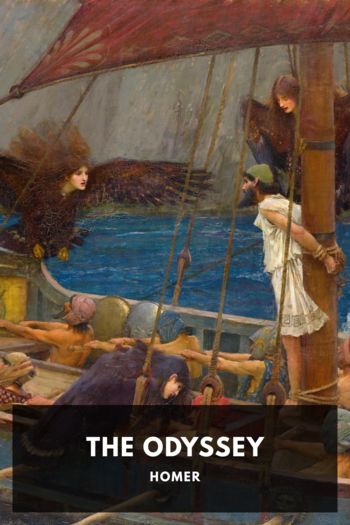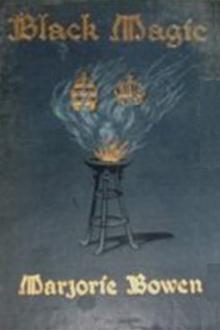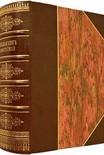The Wrecker, Clive Cussler [book club suggestions .TXT] 📗

- Author: Clive Cussler
Book online «The Wrecker, Clive Cussler [book club suggestions .TXT] 📗». Author Clive Cussler
A mile down the newly laid track, harsh electric light marked the sprawling construction yard of workmen’s bunkhouses, materials stores, machine shops, dynamo, scores of sidings thick with materials trains, and a roundhouse for turning and repairing their locomotives. Below that staging area, deep in a hollow, could be seen the oil lamps of an end-of-the-tracks camp, a temporary city of tents and abandoned freight cars housing the makeshift dance halls, saloons, and brothels that followed the ever-moving construction yard.
It would be moving a lot more slowly now.
To clear the rockfall from the tunnel would take days. A week at least to shore the weakened rock and repair the damage before work could resume. He had sabotaged the railroad quite thoroughly this time, his best effort yet. And if they managed to identify what was left of Kevin, the only witness who could connect him to the crime, the young man would prove to be an angry hothead heard spouting radical talk in the hobo jungle before he accidentally blew himself to kingdom come.
2
BY 1907, THE “SPECIAL” TRAIN WAS AN EMBLEM OF WEALTH AND power in America like none other. Ordinary millionaires with a cottage in Newport and a town house on Park Avenue or an estate on the Hudson River shuttled between their palatial abodes in private railcars attached to passenger trains. But the titans—the men who owned the railroads—traveled in their specials, private trains with their own locomotives, able to steam anywhere on the continent at their owners’ whim. The fastest and most luxurious special in the United States belonged to the president of the Southern Pacific Railroad, Osgood Hennessy.
Hennessy’s train was painted a glossy vermilion red, and hauled by a powerful Baldwin Pacific 4-6-2 locomotive black as the coal in its tender. His private cars, named Nancy No. 1 and Nancy No. 2 for his long-dead wife, measured eighty feet long by ten feet wide. They had been built of steel, to his specifications, by the Pullman Company and outfitted by European cabinetmakers.
Nancy No. 1 contained Hennessy’s office, parlor, and state rooms, including marble tubs, brass beds, and a telephone that could be connected to the telephone system of any city he rolled into. Nancy No. 2 carried a modern kitchen, storerooms that could hold a month’s provisions, a dining room, and servants’ quarters. The baggage car had room reserved for his daughter Lillian’s Packard Gray Wolf automobile. A dining car and luxurious Pullman sleepers accommodated the engineers, bankers, and lawyers engaged in building the Cascades Cutoff.
Once on the main line, Hennessy’s special could rocket him to San Francisco in half a day, Chicago in three, and New York in four, switching engine types to maximize road conditions. When that wasn’t fast enough to serve his lifelong ambition to control every railroad in the country, his special employed “grasshopper telegraphy,” an electromagnetic induction system patented by Thomas Edison that jumped telegraphic messages between the speeding train and the telegraph wires running parallel to the tracks.
Hennessy himself was a wisp of an old man, short, bald, and deceptively frail looking. He had a ferret’s alert black eyes, a cold gaze that discouraged lying and extinguished false hope, and the heart, his fleeced rivals swore, of a hungry Gila monster. Hours after the tunnel collapse, he was still in shirtsleeves, dictating a mile a minute to a telegrapher, when the first of his dinner guests was ushered in.
The smooth and polished United States senator Charles Kincaid arrived impeccably dressed in evening clothes. He was tall and strikingly handsome. His hair was slick, his mustache trim. No hint of whatever he was thinking—or if he was thinking at all—escaped from his brown eyes. But his sugary smile was at the ready.
Hennessy greeted the politician with barely veiled contempt.
“In case you haven’t heard, Kincaid, there’s been another accident. And, by God, this one is sabotage.”
“Good Lord! Are you sure?”
“So damned sure, I’ve wired the Van Dorn Detective Agency.”
“Excellent choice, sir! Sabotage will be beyond the local sheriffs, if I may say so, even if you could find one up here in the middle of nowhere. Even a bit much for your railway police.” Thugs in dirty uniforms, Kincaid could have added, but the senator was a servant of the railroad and careful how he spoke to the man who had made him and could as easily break him. “What’s the Van Dorn motto?” he asked ingratiatingly. “‘We never give up, never!’ Sir, as I am qualified, I feel it’s my duty to direct your crews in clearing the tunnel.”
Hennessy’s face wrinkled with disdain. The popinjay had worked overseas building bridges for the Ottoman Empire’s Baghdad Railway until the newspapers started calling him the “Hero Engineer” for supposedly rescuing American Red Cross nurses and missionaries from Turkish capture. Hennessy took the reported heroics with many grains of salt. But Kincaid had somehow parlayed bogus fame into an appointment by a corrupt state legislature to represent “the interests” of the railroads in the “Millionaires’ Club” United States Senate. And no one knew better than Hennessy that Kincaid was growing wealthy on railroad-stock bribes.
“Three men dead in a flash,” he growled. “Fifteen trapped. I don’t need any more engineers. I need an undertaker. And a top-notch detective.”
Hennessy whirled back to the telegrapher. “Has Van Dorn replied?”
“Not yet, sir. We’ve just sent—”
“Joe Van Dorn has agents in every city on the continent. Wire them all!”
Hennessy’s daughter Lillian hurried in from their private quarters. Kincaid’s eyes widened and his smile grew eager. Though on a dusty siding deep in the Cascade Range, she was dressed to turn heads in the finest dining rooms of New York. Her evening gown of white chiffon was cinched at her narrow waist and





Comments (0)